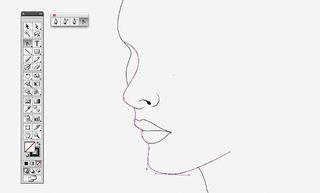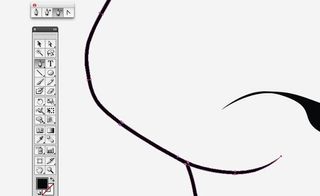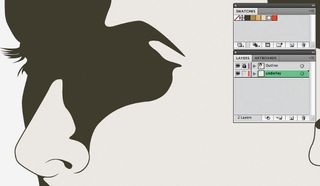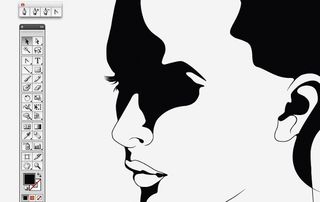Hello Monday
Split between Denmark and New York City, this innovative studio creates grand, visually rich interfaces that straddle the line between beauty and usability. President Andreas Anderskou tells Ed Ricketts how it’s done
Good web design exists in a similar category to film special effects, secret service agents and wigs: if they do their job properly, you shouldn’t notice them. Fighting with overly complex interfaces and pointlessly slow-loading Flash apps might be the epitome of bad web design, but it’s much harder to pinpoint just what makes a website efficient, interesting and innovative.
This is a concept that Hello Monday has grasped. The creative agency produces ‘visual universes’ across a range of interactive media, most notably on the web and for mobile apps, and while its concepts are bold and its technology often complex, the idea that usability comes first is always paramount. Prestigious clients such as Google, PlayStation, Victoria’s Secret and Lyndon Wade clearly appreciate this.
Like many interesting enterprises, the company was initially born out of dissatisfaction with its founders’ current jobs. “According to legend, he who can transform Monday into the best day of the week can become invincible,” says Andreas Anderskou, president. “On a perfect Monday the engine runs on passion, the deck is the playground, and the course is set towards great deadlines, good craftsmanship, skilled and friendly people, honesty, good food, mutual trust, and no fear. We sail between three offices in Copenhagen, Aarhus, and New York, but there is only one boat.”
So what’s the key to great web design? “Well, that depends on whether you want to entertain, educate, impress, inspire or something completely different,” he says. “If you’re developing a tool, you’ll probably be best off sticking to conventions. But for an inspirational site or a campaign, you can push the boundaries more.”
Ease of use, he emphasises, is almost always the most important factor, no matter what the client or project may be – but that doesn’t necessarily mean going for the simplest or most direct solution. “We aim to find a balance between the known and the surprising. The real challenge often lies in being creative inside the boundaries of the familiar,” Anderskou explains.

This was the case with Google, who commissioned Hello Monday to design its Guide to the App Galaxy using HTML5. Its purpose is to help users navigate the complexities of launching an app and building a business from it, so while the content was quite complex, Google wanted the site to be educational, simple, fun and engaging, says Anderskou. “Users fly through the site in a spaceship that they can manoeuvre using keyboard commands,” he adds. “The planets are representative of different stages of app development, each containing helpful tips from Google. Users can also follow the journey of other successful apps like Angry Birds and The Weather Channel, or create their own journey to share with friends.” There were several challenges along the way, such as ensuring that the site repeated seamlessly, and breaking the constraints of a normal grid-based HTML website. As an extra touch, and to mirror the idea of a spaceship taking off from earth, the pages scroll in the opposite direction to normal, i.e. from bottom to top.
Every project evolves in different ways, but one common aspect is that at the beginning of each, everyone at Hello Monday is encouraged to pitch in ideas: “The big idea may just as well come from a developer or a project manager as much as a designer,” says Anderskou. “We insist on impeccable implementation, whether we own that part of the project or not. This very open and unconstricted beginning portion of our projects often leads to big ideas, and that is definitely something we take pride in.” A lot of sketching is involved, and plenty of time allocated to the idea and the overall concept, before moving on to ensuring that both agency and client have the same expectations about the project.
The amount of prototyping, and how it’s done, is probably the most variable part of the design equation. “So far we’ve worked in everything from OmniGraffle, Axure and even PowerPoint to a bunch of the more collaborative tools online. It depends on the complexity of the job and the need for collaboration on the information architecture part of the project. For complex solutions such as shops, a very detailed prototype is crucial, and you easily end up with 80-plus page prototypes.”

In some cases, of course, less can be more. Tony D’Orio is a renowned photographer best known for his quirky character portraits and his advertising work for the likes of Jim Beam. Hello Monday was commissioned to produce what was essentially his portfolio site – a classic case of letting the work do the talking, rather than smothering the visitor with flashy effects. Thus Hello Monday ensured the site worked as smoothly and as unobtrusively as possible, without letting it devolve into a basic slideshow. “This website showed us that simple ideas don’t necessarily have to be boring,” says Anderskou. “We wanted to make a simple concept interesting by nurturing every little detail in the code that improves the overall user experience, interaction and transitions.”
This manifests as small touches: clicking on a thumbnail smoothly displays the image at a larger size to the left or right of the screen, while a discreet ‘X’ appears on the thumbnail to show it’s been viewed. Hovering over the image then reveals iconic controls for Previous, Next and Close Image, and other details such as D’Orio’s bio and contact is kept tidily hidden away in a simple menu.
As much as is possible, Hello Monday tries not to let potential technical limitations interfere with the big idea . “A lot of projects would never have seen the light of day if we were to start off by limiting ourselves technically,” Anderskou says bluntly. “In some cases, the idea may be sparked by technical developments and possibilities, but we try not to be constrained at the beginning of a project.” Ad agency Johannes Leonardo’s website relies on such innovative use of technology. The agency wanted to express the idea that communities could act as a medium for brands to define themselves, “so with this in mind, we set out to create a truly interactive experience that allows the user to become the medium,” says Anderskou. “The user can permeate the landscape of the website in a million different ways such as uploading a photo, or taking a self-portrait via webcam.”
The image then appears as a 3D matrix of dots with depth – much like the pin-art toys that were all the rage in the 1980s – that also acts as the main menu for exploring the company’s information. This involved plenty of optimisation to ensure the website still ran at a decent speed, as well as the custom solution to upload and process the images themselves.

“It’s always frustrating when people fall in love with a trend or technology, and decide on using it before the concept is even clear,” adds Anderskou, returning to the theme of emerging developments. He says that the agency doesn’t have much time for the ongoing debates about which web tech is ‘better’, such as the current to-and-fro about HTML5 and Flash. “The point is that technology is moving at a tremendous pace at the moment, and that continuously gives us improved possibilities for creating great solutions, but technology for technology’s sake is uninteresting. You must always have a purpose of some sort.”
The continuing churn of this technology leads to definite trends in web design, which – while perhaps not as transient and jarring as, say, ten years ago – still pop up with greater frequency than in more established media such as print. “We see a lot of video being used in contexts where you would not have seen it only a few years ago,” cites Anderskou as an example. “Also, the app and mobile market is obviously exploding. Social media is clearly here to stay– you can see it moving a lot closer to the business side of things. Finally, storytelling and digital communication seem to merge in a host of highly creative solutions. We’re following this development eith interest.”

Conversely, some technology has a habit of sticking around for far longer than anyone would have anticipated. During one interview from 2007, one of Hello Monday’s founding partners, Anders Jessen, stated that he didn’t think Flash would be around in 2014 – and yet it’s still the backbone of many of the studio’s projects five years on.
“Yes, Anders may have jumped the gun on that one, in an effort to get a point across,” says Anderskou. “The point is that technology moves so fast these days; what is interesting and hyped-up today may already be outdated in a matter of a few years.”
And what of the future for Hello Monday itself? “At the moment,” Anderskou says in a somewhat deadpan way, “our long-term vision is to still be around in 2014 as well.” Judging by its work to date, that seems like a safe bet.

Thank you for reading 5 articles this month* Join now for unlimited access
Enjoy your first month for just £1 / $1 / €1
*Read 5 free articles per month without a subscription

Join now for unlimited access
Try first month for just £1 / $1 / €1
Get the Creative Bloq Newsletter
Daily design news, reviews, how-tos and more, as picked by the editors.
The Creative Bloq team is made up of a group of design fans, and has changed and evolved since Creative Bloq began back in 2012. The current website team consists of eight full-time members of staff: Editor Georgia Coggan, Deputy Editor Rosie Hilder, Ecommerce Editor Beren Neale, Senior News Editor Daniel Piper, Editor, Digital Art and 3D Ian Dean, Tech Reviews Editor Erlingur Einarsson, Ecommerce Writer Beth Nicholls and Staff Writer Natalie Fear, as well as a roster of freelancers from around the world. The ImagineFX magazine team also pitch in, ensuring that content from leading digital art publication ImagineFX is represented on Creative Bloq.
